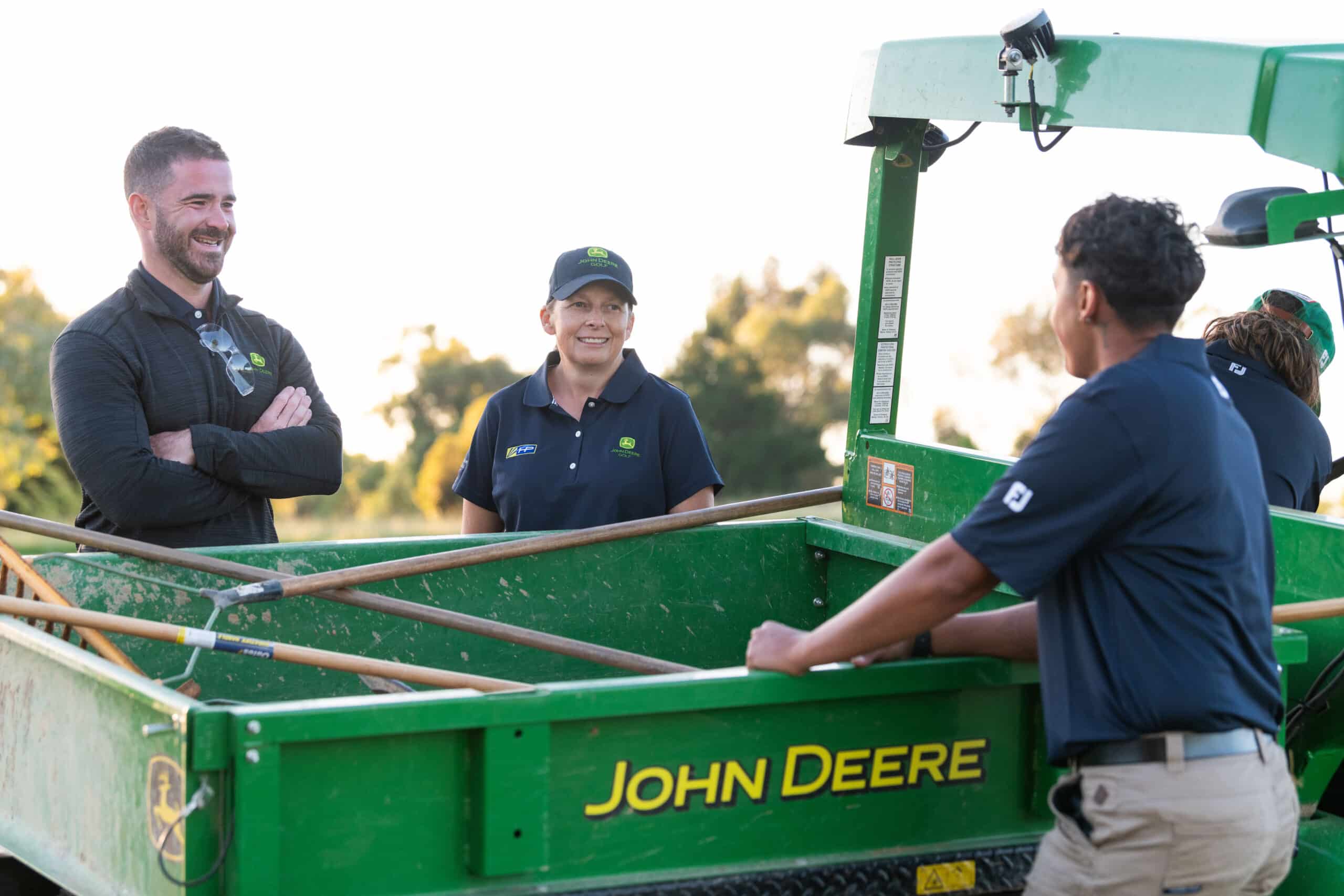If you’ve been giving your lawn a daily light sprinkle, now is the time to switch it up, with a turf industry expert tipping a less-frequent deep watering as the key to a better lawn.
As the General Manager for Tinamba Turf, a Queensland business which rolls out more than 2.5 million square metres of turf each year, Hugo Struss has plenty of experience growing and maintaining premium lawns.
He’s one of the industry leaders John Deere has partnered with to discover the secrets to a lush, healthy lawn.
Although his operation is run under a precision-agriculture model, where every droplet of water and speck of nutrient is carefully measured to maintain consistency in the product, Hugo does have some simple lawn watering tips which can work at home.
How often should I water my lawn?
That all depends on the variety of grass and the lawn’s soil type and drainage. As a broad rule of thumb, I recommend a deep watering once or twice a week for most backyards. During winter, you can water a little less. Obviously, if you are getting frequent rain and your lawn looks lush, you know it’s getting adequate hydration. People often think it’s best to water lightly five times per week, but that method only encourages shallow root growth when, in reality, you want a deep root system for a healthy lawn.
How does a deep watering improve lawn and use less water?
Deep watering encourages the roots to grow extensively and to stretch out to source more water and nutrients deeper down. A thriving root system under the surface is beneficial to a plant’s leaf health above the surface. In dry times, the ground can turn hydrophobic – when the soil gets so dry it will start to repel water – but deep watering will help lock in the moisture, so it becomes more resilient during dry spells.
How long does a deep watering take?
It’s best not to watch the clock when you deep water. Instead, closely observe the water’s impact on the ground and you’ll know when your lawn has had a proper drink. If you’ve done it correctly, your lawn will look sodden.
How will I tell if the water isn’t absorbing correctly?
If the water is running off down the hill, or you can see it instantly pooling, it’s time to stop and re-evaluate. If the water isn’t absorbing and appears to run away as soon as you start the watering process, that’s not a good sign. Strategies to prevent this include aerating your soil or adding a wetting agent.
What is a wetting agent and how does it work?
Wetting agents are a product that helps to lower the soil’s surface tension and allows water to better penetrate the profile. Using a wetting agent means there is a much more efficient use of the precious resource, hopefully saving time and money as well. At Tinamba Turf we prefer to use a liquid wetting agent to better penetrate the soil.
And if you’re in need of a new lawnmower to help bring it all together – talk to your local RDO team about our lawnmower range.
Article by John Deere.

 MyDealer:
MyDealer:


